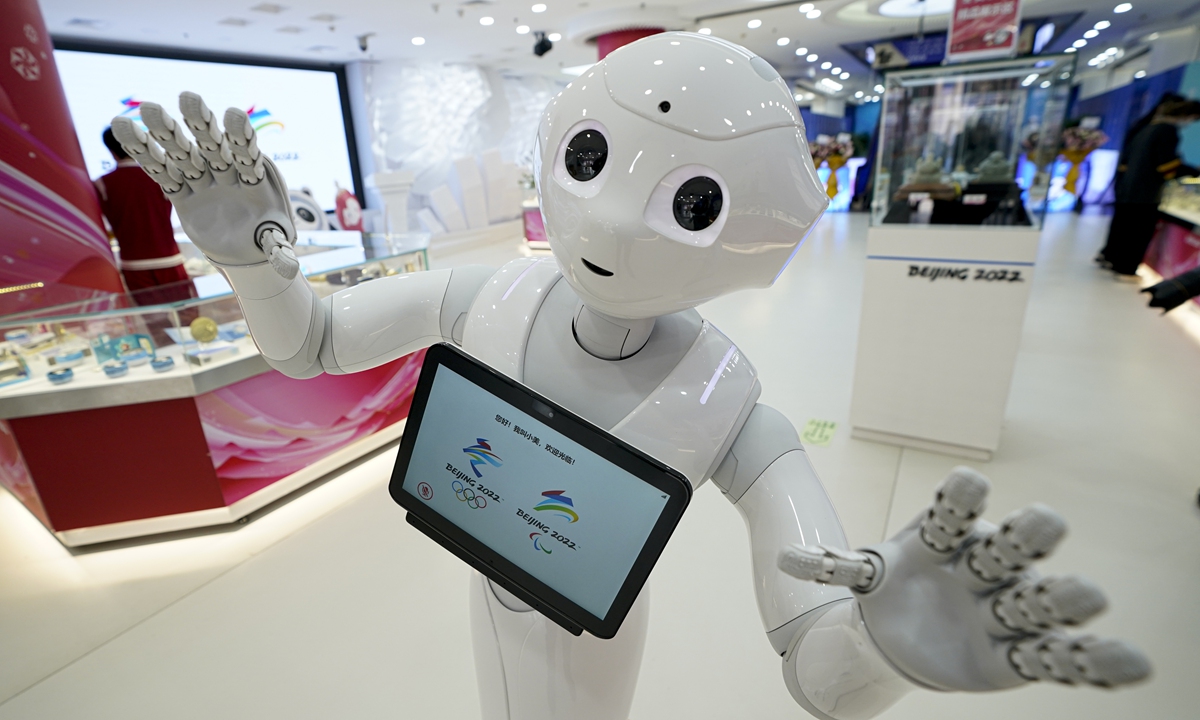Robots Chefs and Zero Gravity Sleeping: Technology and the Beijing Games

We have seen it all these games … triumphs and heartache, high flying stunts not even attempted prior to the games (we see you, Eileen Gu!), and farewell to some beloved athletes (thank you for all the memories, Shaun White). These aspects of sports, along with the connections we have to the Games and to the athletes is what engages us and unites fans around the world.
What we are not seeing as fans is the technology at these Games, which is above and beyond any prior Olympic events. From robots to artificial intelligence to smart beds, technology is embedded throughout the Games. Let’s look at just some of the ways technology is being utilized in the Games:
Robots
Yes, robots. Inside the closed loop of the Beijing Games, robots are taking and prepping food orders, transporting equipment, driving minibuses, taking body temperatures, cleaning surfaces, and assisting visitors and athletes. These robots have been implemented and used at all the venues within the closed loop to limit human-to-human contact amid the concern over the Omicron variant of COVID-19. And what’s even better is these robots being self-charging. They return to their docking station after each use to disinfect and recharge.
Not possible, you say? Let’s pretend you are at the Games, and you want to eat with some friends (inside the closed loop, of course). You and your colleagues, each separated by clear plexiglass to prevent the spread of germs, will place your order. That order will then be prepared by the electronic chefs, then delivered to you via an overhead system. Your meal is literally placed in front of you from above. Still doubtful? Check out this video:
Smart Beds
Athletes will sleep more comfortably at the Beijing Games than any other prior Olympics. That is because the athletes’ rooms are fitted with “smart beds”. These “smart beds” beds feature memory foam mattresses. Known for the ability to adjust to the curves of the body lying in the bed, memory foam mattresses help to promote blood circulation and spread-out pressure across the body. This will provide a good night sleep throughout the Games and enable the athletes’ bodies to better release tension after events.
In addition, the beds are embedded with sensors that track vitals, such as heart rate and breathing rate, which can be sent to their coaches. The beds also have a remote, which allow the athletes to adjust the bed position. The most talked about feature, however, is the zero-gravity mode. Known as the Zero-G mode, the feature is not quite zero-gravity, but does allow the athletes to reduce pressure on their joints and muscles, providing a more relaxing sensation for them when its being used. Does anyone other than me want to order one of these beds for themselves? Just me? Okay, moving on…
There are other technologies being utilized for the athletes, such as cameras and sensors being embedded into equipment. When the athlete uses the equipment, such as a stationary bike, various data points are continuously streamed to their coaches for their analysis. Smart wearables are also being used. Not only can the coaches receive the information collected from the wearables, but physicians and therapists are using the information to reduce the risk of injuries and help their athletes heal faster.
3D + AI
3D and artificial intelligence are being utilized to assist in referee scoring and to help engage fans. How so? Take ski jumping, as an example. The technology allows for speed, flying height, landing distance, and rotation angle to be captured throughout each athlete’s jump. This data can be superimposed onto the original video and assist the referees by ensuring they have accurate data. At the same time, the technology is being used to create a 3D model. The 360-degree model allows spectators to gain an up-close view of the jump from various angles by using virtual reality technology.
Artificial intelligence is also being used in other ways. Programs are being used to analyze performance data for the athletes, helping their coaches and other entourage create personalized plans for rest, training, and nutrition. It’s also being used by coaches to try to predict their opponent’s next move. Yes, you read that correctly. AI technology is being used to predict the next move within a game or match. How? Inventors and scientists from the Harbin Institute of Technology in China have developed and debuted a robotic curling coach using artificial intelligence. This robot can simulate the curling throw, which teams can then use to predict game situations before they occur.
There is no doubt that the technology introduced during these Games is far above what has been at previous Olympics. Given that sport technology has been being developed at record pace the past couple of years, one can only wonder what type of technology will be developed and implemented at the Paris 2024 Games.
EPFL
EPFL, one of the top research and engineering universities in the world and a partner of AISTS, is known for pushing the boundaries of sport technology innovation. The university also has deep ties to the Olympic Games, with the most recent involvement being at the Lausanne 2020 Youth Olympic Games. During these Games, EPFL developed and tested several types of new technology, such as a wearable biochemical sensor that can measure biomarkers in sweat. Another example was a tracking movement system that analyzes an athlete’s movements, much like those used in Beijing.
In July 2021, the Lausanne Youth Olympic Games Organizing Committee and the Organizing Committee for Paris 2024 signed a collaboration agreement, with the overall purpose of the agreement being knowledge learning and sharing. Built on four pillars, one of the areas of focus within the agreement is technology. The 2024 Games have a commitment to legacy, sustainability, and innovation. While it has yet to be announced if EPFL will have a role, there is no doubt that the Beijing Games have set the bar for the next summer Games. Sport technology is being developed at record pace. Given the commitment to innovation by both the Paris 2024 Organizing Committee and EPFL, one can only wonder what type of sport technology will be developed and implemented by 2024.
Related article: Alibaba unveils “Virtual Influencer” for the Olympic Winter Games Beijing 2022

Christy Ann Dukehart | Alumni 21′
Christy is a sports director and entrepreneur with over 6 years of experience in developing and training athletes, with an additional 10 years in international business leadership roles.





